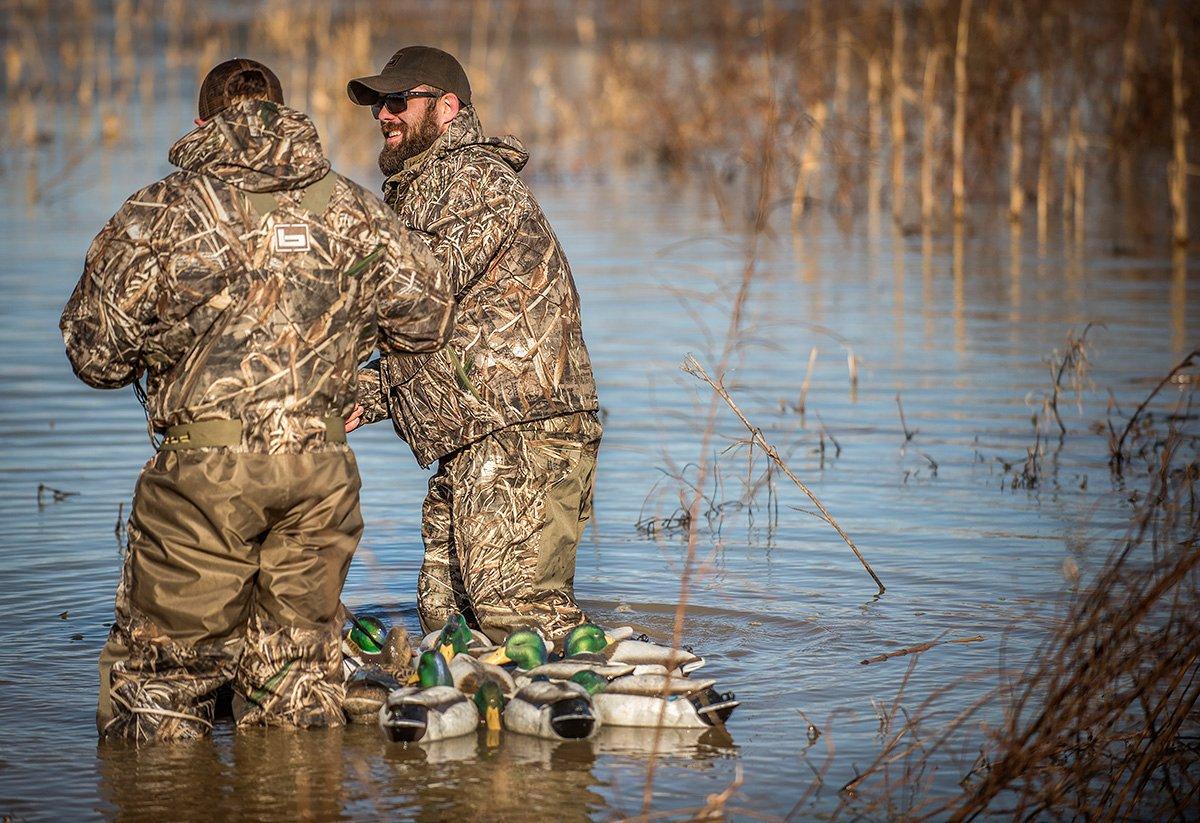Hunting with others is half the fun of waterfowling, and these 5 tips will make it even better
Our goose hunt happened by accident.
While bowhunting the previous evening, I'd heard geese clamoring excitedly as they landed on water nearby. This surprised me, because I had no idea there was water behind the trees (hey, this was before Google Earth). That honking effectively killed my concentration on bowhunting.
The next afternoon, my college friend Ryan and I pooled our money to buy a half-dozen goose floaters and then made a long hike into the big pothole. We set our floaters in the widest area, which was littered with goose feathers. Nothing showed through most of the afternoon. Then, an hour before dark, a pair of geese appeared and headed for our spread, as if on a string. Apparently, they had been using the pothole all summer and had never been hunted. The pair cupped right in, so focused on our decoys that I don't think we could have flared them even if we had jumped up and waved our arms.
They were gliding, feet down and only 5 feet above the water. It was a sure double. I rose and fired. However, I hadn't thought about Ryan and pulled up when I was between him and the birds. He had no shot, and our sure double turned into a single. It was a rookie mistake, and I felt sheepish that I botched Ryan's opportunity.
Hunting with a partner is one reason waterfowling is so enjoyable compared to, say, freezing by yourself in a deer stand. Pairing up with a buddy has practical benefits. You can pool your money for more decoys or go in on a boat together. Hunting with a partner also cuts your work, as you can share duties for scouting and deploying decoys. Plus, you have someone to share the hunt with and talk to when action is slow.
But hunting with a buddy also presents pitfalls. Consider these tips when waterfowling with a partner — especially if you haven't hunted together before — so everyone has a safe, enjoyable hunt.
1. Let Your Partner Have the Good Seat
If you're the more experienced hunter, give your partner the downwind side of the blind. Ducks and geese typically land into the wind, so birds crossing in front of your spread should approach from your partner's side, giving him the first crack. It also gives your partner more time to size up the flock and pick out birds to target.
2. Respect His Zone of Fire
When you're hunting alone, you can twist and turn to shoot no matter which direction birds come from. With someone else, each shooter should have a specific zone of fire. For example, if your buddy is on the right and a bird flies on that side, it's obviously his bird, and you shouldn't shoot, out of respect for your buddy and for his safety. Even when birds are straight out front and the zone of fire isn't so obvious, each hunter should pick birds on his side of the flock. Further, be mindful of your swing. You should never swing your shotgun barrel or fire when you're encroaching on your partner's side. If it feels too close, it is. And if your partner is swinging too close to you, say something. No one wants to have their bell rung by a shotgun beside their ear.
3. Call the Shots
It's important that everyone is on the same page when it's time to shoot. Designate someone as the pit boss. No one shoots until that person calls the shot. To be fair, the pit boss should call the shot when birds are out front and everyone has a good, safe angle to shoot. The pit boss might also call the shot to favor a novice hunter, but if doing so, make sure to agree on this ahead of time so no one feels slighted.
4. Don't Be a Game Hog
Party hunting of ducks and geese is illegal. Each hunter is responsible for his own limit. I've hunted with people who assume that if there are multiple hunters, they have the green light to shoot everyone's limit That might be fun for them, but it's disrespectful and not fun for everyone else. Even if you're a much better shot than your partner, that doesn't give you the right to shoot his birds. Give him a chance, and be patient. He's not going to get better watching you shoot.
5. Take Turns on Singles
This tip sort of goes along with the previous tip. If a solo bird comes in, don't race to shoot it. If it came from your buddy's side, let him take it. Or if it comes from out front, let him take it. Then you get the next single. When a hunter knows it's his bird to shoot, he's more apt to take his time and make a good shot rather than racing his buddy.
Click here for more Realtree waterfowl hunting content. And check us out on Facebook.












